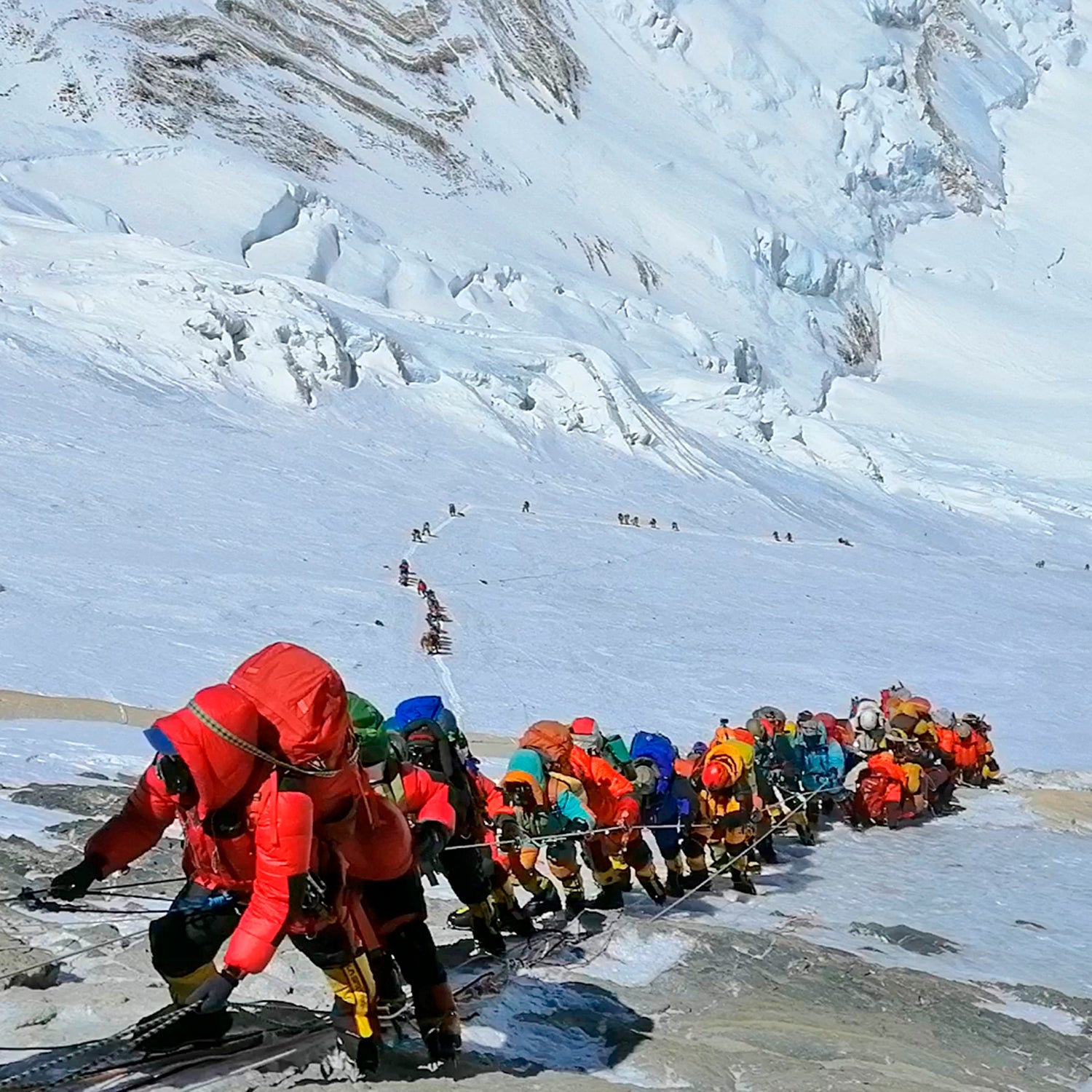NepalÔÇÖs Ministry of Tourism announced proposed changes for guiding and climbing Mount Everest at a press conference held in Kathmandu on August 14. The new regulations would drastically cut back the number of permits issued, following a season that saw record crowds╠řand traffic jams on the worldÔÇÖs highest peak, along with 11 deaths that made it the fourth-deadliest season in history.╠ř╠ř
The government plans to present the new rules to the countryÔÇÖs parliament for approval╠řin enough time for them to take effect for the spring season next year.
Here are some highlights from the 59-page report:
- Expedition companies must have a minimum of three yearsÔÇÖ experience organizing high-altitude climbs before guiding on Everest.
- Climbers will have to submit proof of summiting at least one 6,500-meter (21,325-foot) peak.
- Guide companies must charge a minimum of $35,000 per client. (My understanding is that this includes the current $11,000 permit fee.)
Officials also reiterated current rules that require climbers to have a valid health certificate and hire╠řa trained Nepali guide.
However, there was some vague language included in the report. For example, the proposal says that ÔÇťclimbers to Sagarmatha and other 8,000-metre mountains must undergo basic and high altitude climbing training,ÔÇŁ but it does not give a standard for what that looks like or how it will be regulated.╠ř
Other areas addressed with scant details included a call for improvements in the rope-fixing process, primarily with respect to getting them installed earlier, and some type of improved weather-forecasting system. Both of these points were highlighted by the government during the 2019 spring season as a reason for the traffic jams.╠ř
ÔÇťEverest cannot be climbed just based on oneÔÇÖs wishes,ÔÇŁ tourism minister Yogesh Bhattarai ╠řreported by╠řThe New York Times. ÔÇťWe are testing their health conditions and climbing skills before issuing climbing permits.ÔÇŁ
The new price floor of $35,000 is still unlikely to deter inexperienced aspirants like doubling or tripling the permit fee would have. This seems to have been a move aimed at calming local operators, whose businesses could be hurt by a permit increase. The median price Nepali╠řoperators charged in the 2019 spring season was around $40,000, according to my , but deep discounts regularly took the price down to less than $30,000ÔÇöor even lower.
While a step in the right direction, the two major rules can be easily bypassed and lack teeth.
The requirement of three yearsÔÇÖ╠řexperience guiding at high altitude╠řis something any Sherpa can claim. This falls short of actually requiring guides to be qualified by a legitimate training organization, like the Khumbu Climbing Center, or being certified by the with International Federation of Mountain Guides Associations╠řcredentials.
As for proof of summiting an 6,500-meter peak? WeÔÇÖve seen forged Everest summits before, including this season, so faking a certificate for another qualifying mountain is possible. It could create additional problems if the Nepalese government delegates it to the guides, who have a vested interest in signing clients, to verify someoneÔÇÖs experience. China requires climbers to have previously summited an 8,000-meter peak before climbing on the Tibet side and has an independent agency review all applications. I had hoped Nepal would follow suit.╠ř
Most reputable guide companies like to see Everest applicants with successful summits of Aconcagua (6,962 meters) and Denali (6,168 meters); other popular peaks above 6,500 meters include Muztagh Ata (7,546 meters)╠řand Ama Dablam (6,856 meters).╠řThe best in class require a summit of an 8,000-meter╠řpeak like Manaslu or Cho Oyu.
Whether or not these proposed rules end up taking some of the crowds off Everest ultimately comes down to enforcement. Thus far, IÔÇÖve not seen a willingness from the Nepalese government or the less reputable guiding╠řservices to do this.╠ř╠ř


